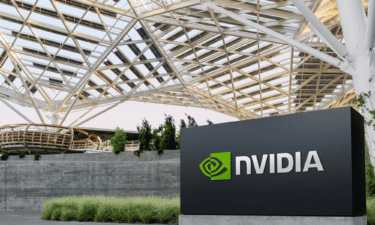Shopify (TSX:SHOP)(NYSE:SHOP) is, by far, Canada’s best tech name and a herald of the resurgence in our home-grown tech scene. While marijuana stocks have gotten all the press lately, Shopify has been a steady outperformer, returning over 127%, this year alone. And based on the latest quarterly numbers as well as announcements from Shopify Unite, Shopify’s annual partner and developer conference, Canada’s number one tech stock might soon be tangling with Amazon on its own turf.
A perfect Q1 and exciting developments in the works
While my colleagues have previously covered Shopify’s first-quarter numbers, it bears repeating that this was an incredible start to the year. No matter the metric, Shopify not only exceeded its initial lofty guidance but surpassed the Street’s consensus views on revenue, EPS, and operating profits. More importantly, Q1 also saw international growth accelerate via merchant adds, while Shopify Payments grew 3% year over year thanks to gross merchandise volumes that gained 50% over the same time span.
In other words, it was hard to be bearish on the stock after such a quality beat, and the acceleration in Shopify Plus adoption as well as international expansion further cements Shopify’s place in any growth-oriented portfolio.
Last month, Shopify announced some bullish developments during its annual Shopify United conference. Key takeaways include the launch of a redesigned point of sales software, which will allow Shopify to tackle offline brick-and-mortar merchants as well as existing online customers. This key vertical moves Shopify to target the domain of incumbent players such as Square and more recent entrants such as Lightspeed. Internationally, Shopify is also poised to increase its footprint by rolling out translation APIs as well as multi-currency support for existing merchants, while also offering its platform in 11 different languages.
However, perhaps the most important takeaway from the conference was Shopify’s announcement of its fulfillment network. Through this service, Shopify hopes to alleviate its merchants’ logistical issues by rolling out a network of distributed fulfillment centres, and via a combination of machine learning and partnerships with third-party logistics providers to ensure timely deliveries (as low as a two-day turnaround) across the continental U.S.
For example, if a merchant sells 100 different SKUs on Shopify’s platform, the merchant can upload their sales data into Shopify’s machine-learning platform, which will quickly identify the most popular SKUs from that merchant’s portfolio. Then, based on shoppers’ trends, the top items will be located at shipping nodes closest to the end users, while the least-popular ones will be less concentrated across the entire network, thus keeping shipping costs low.
This approach to fulfillment means that Shopify adds another layer of value for its merchants, while also increasing retention rates. This, of course, also means that Shopify is one step closer to Amazon’s business model, but unlike the U.S. giant, Shopify will allow its merchants to retain control of their sales data, while taking care of the logistical side of the business, so their merchants can focus on scaling up.
To summarize, I believe the announcements from Shopify Unite were incredibly bullish for this growth name. Since its inception, Shopify has been on an incredible trajectory, and through its fulfillment network and international opportunity, the company has just taken another step away from its competitors and towards becoming the Canadian Amazon.







